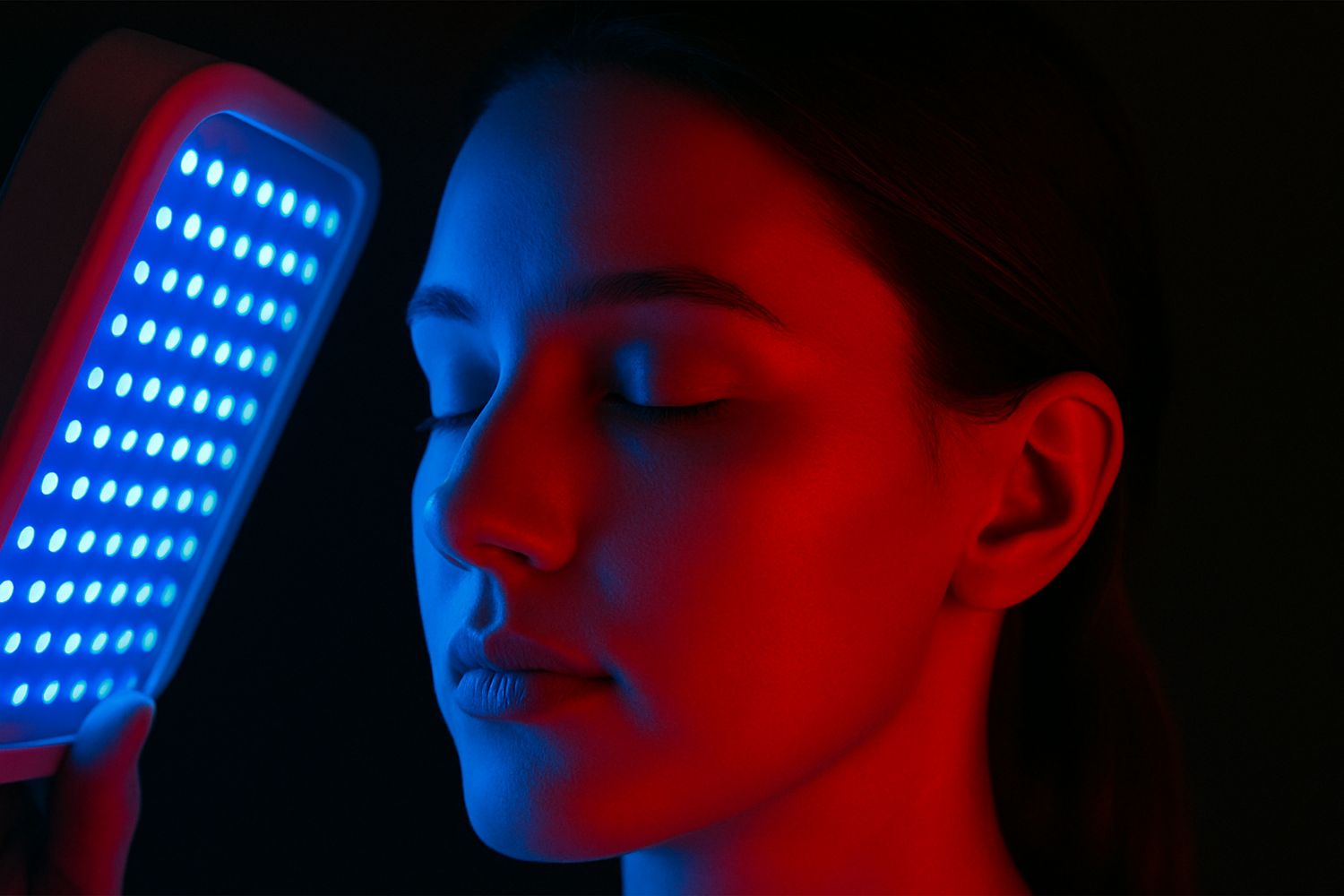
Red and Blue Light Therapy Exploring: Real Benefits, Side Effects & At-Home Guide
Red and blue light therapy has taken the skincare world by storm. From Instagram influencers to dermatologists, everyone seems to be raving about the benefits of LED light. But if you’re wondering, "Can shining lights on my face really help with acne, wrinkles, or pain?" — you’re not alone.
The truth is, red and blue light therapy isn’t just another beauty trend. Backed by real science, these non-invasive treatments are now used everywhere from professional clinics to at-home devices. And yes — when used properly, they can genuinely transform your skin and reduce inflammation.
In this blog, we’ll break down the differences between red and blue light therapy, uncover the real benefits (and possible side effects), share how to use these treatments safely at home.
Whta's The Difference?
The red and blue light key difference lies in the wavelength and penetration depth of the light, so it provides different functions:
Red Light (630–660nm): Reaches deep into your dermis. It stimulates collagen, increases cell turnover, and boosts circulation. Ideal for fine lines, wrinkles, dullness, and loss of firmness.
Blue Light (415-480nm): Works on the surface level to kill acne-causing bacteria (like Propionibacterium acnes), making it perfect for oily, acne-prone skin.
The real magic happens when both lights are combined — targeting both breakouts and aging simultaneously.
What's the Benefits for Face, Skin, and Body
🔴 Red Light Benefits:
- Face: Reduces fine lines, boosts collagen, and improves circulation for a radiant glow
- Skin: Accelerates repair for eczema, scars, and sun damage
- Body: Eases muscle stiffness, joint pain, and chronic inflammation (like arthritis)
🔵 Blue Light Benefits:
- Face: Kills acne-causing bacteria and shrinks oil glands
- Skin: Calms redness, irritation, and inflammatory breakouts
- Body: Useful for bacterial skin infections or photodynamic therapy under medical guidance
Together, they can balance oil, soothe irritation, and rebuild skin strength — which is why combination therapy is becoming so popular.
Side Effects of Red and Blue Light Therapy — Are They Real?
You might’ve seen headlines like “Can LED light therapy cause skin damage?” — and it’s a valid concern. But here’s the truth:
- When used correctly, red and blue light therapy is safe, non-invasive, and pain-free
- The most common “side effect” is temporary redness or warmth, especially if you overuse it
- Overexposure (e.g., exceeding daily recommended time) can dry out the skin or cause mild irritation
Pro tip: Always choose FDA-cleared devices, follow the user manual, and don’t try to speed up results by overusing the device. Like all skincare, consistency beats intensity.
How to Use Red and Blue Light Therapy at Home?
There are so many red and blue light therapy devices on the market now and you can easily get one of your own. Setting up a safe and effective LED routine at home is easier than ever. Here’s a simple 4-step guide:
- Clean your skin: Always begin with a clean, dry face or area.
- Choose your mode: Red light for wrinkles/inflammation, blue light for acne, or combine both.
- Session length: Most masks or panels recommend 10–20 minutes per session, 3–5 times per week.
- Hydrate after: Use a gentle moisturizer or serum to lock in the benefits.
Avoid: Using it on open wounds, looking directly into the LEDs, or applying harsh actives (like retinoids) right before.
Safety Tips & Final Thoughts
- Always choose FDA-cleared or CE-certified devices
- Read the manual carefully before first use
- Do not exceed recommended usage time
- Be patient — visible improvements often take 4–6 weeks
- Combine with a gentle skincare routine for best results
Light therapy works, but like any wellness method, discipline is key. Stick with it, and your skin will thank you.


